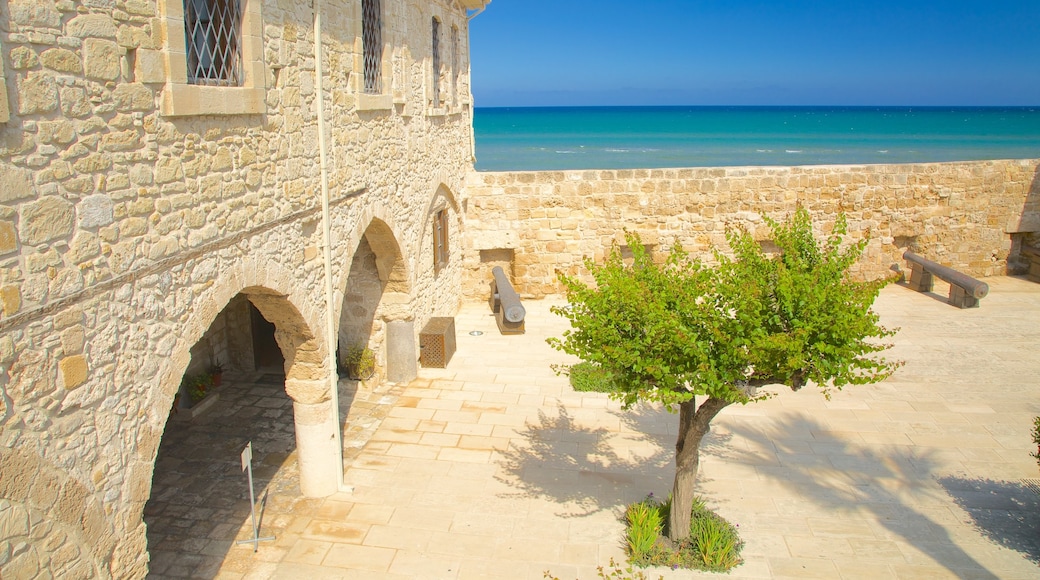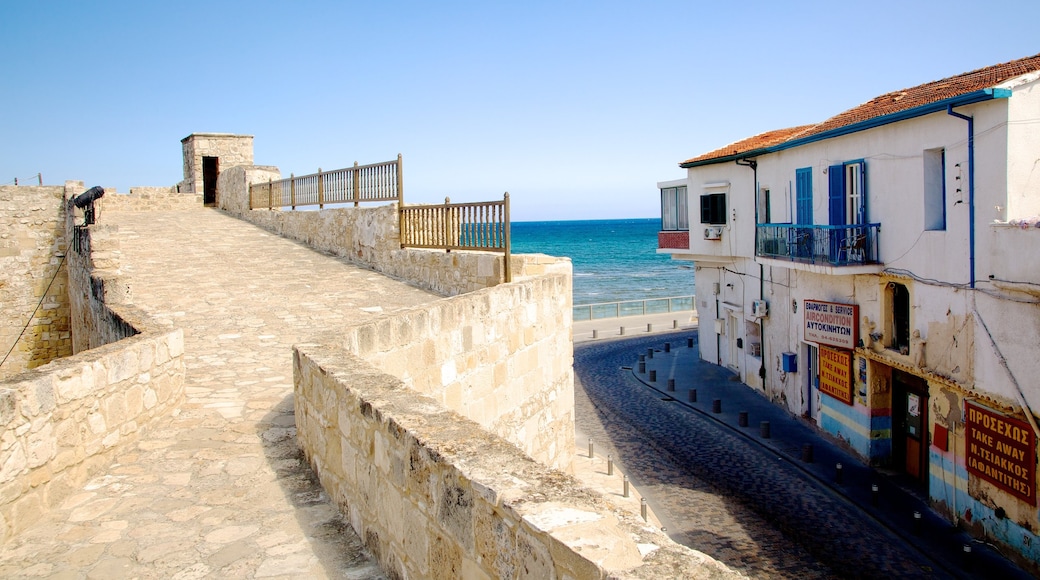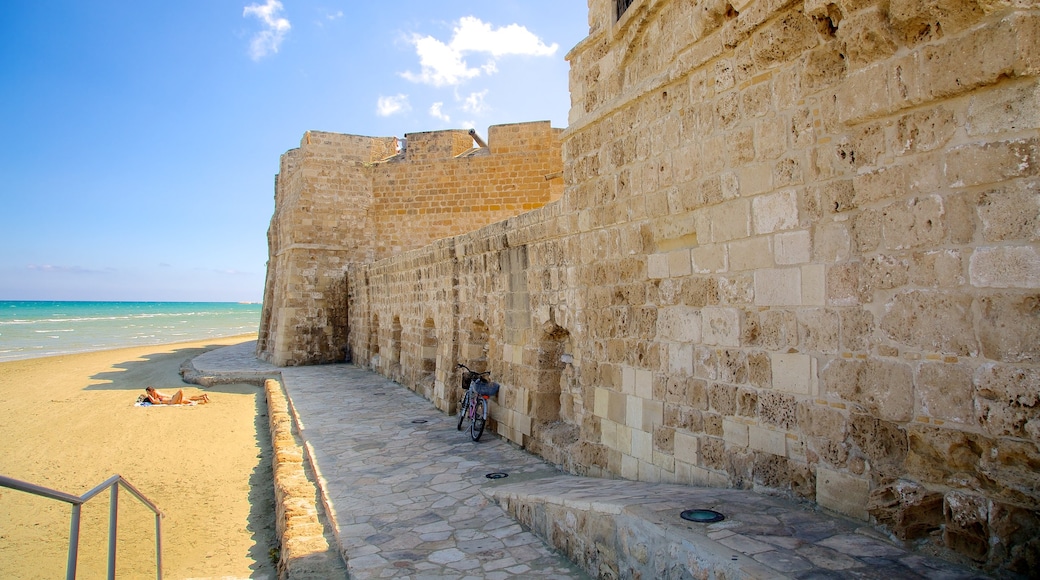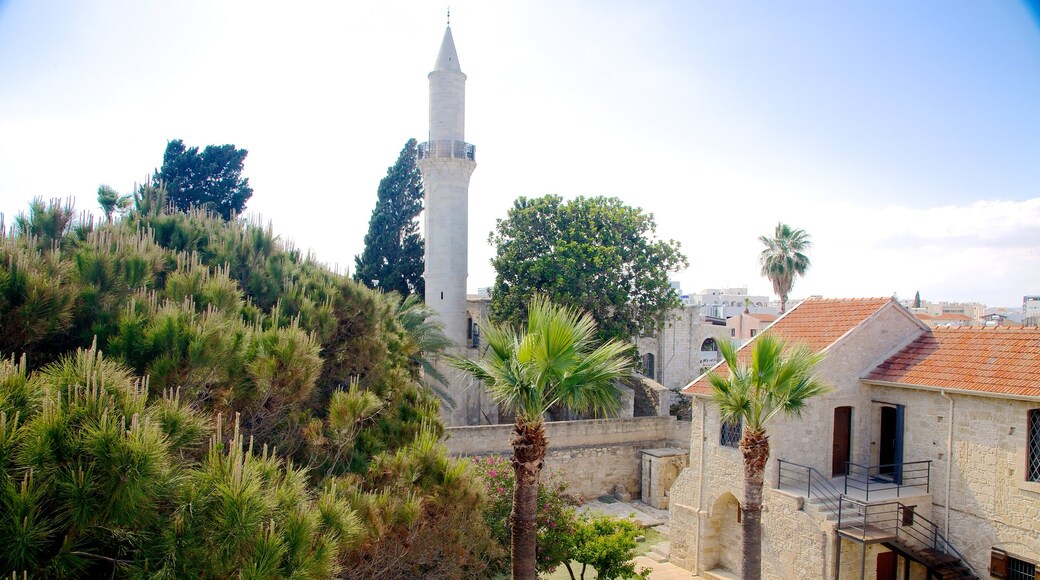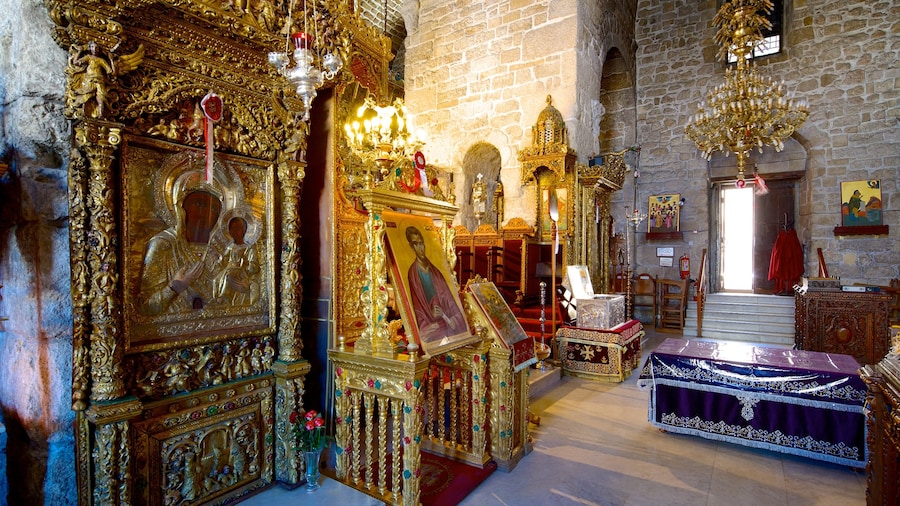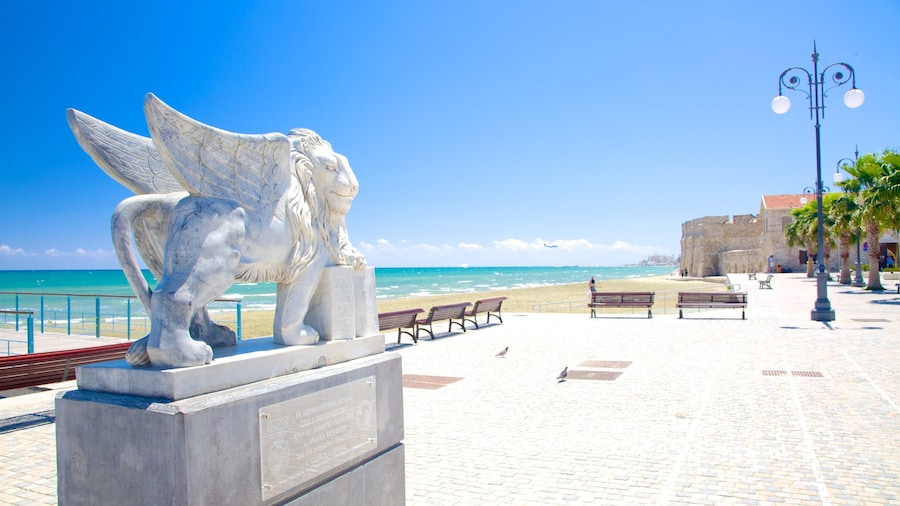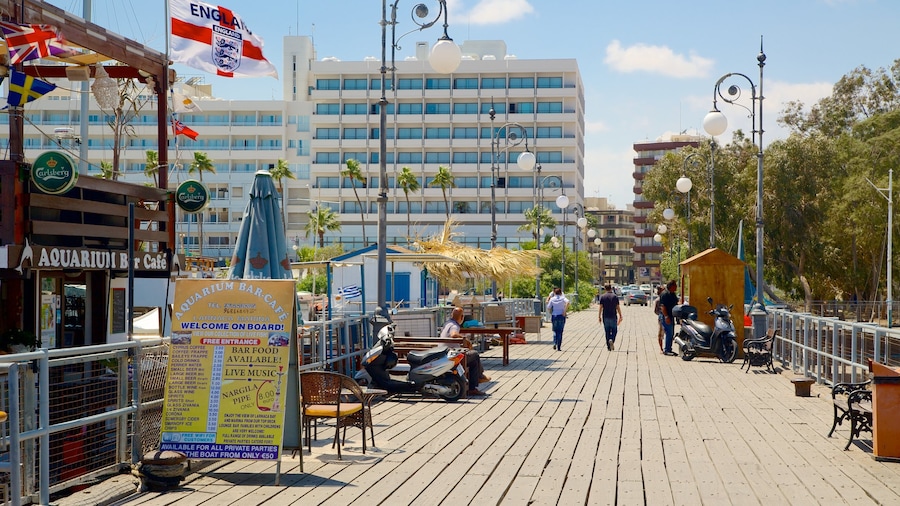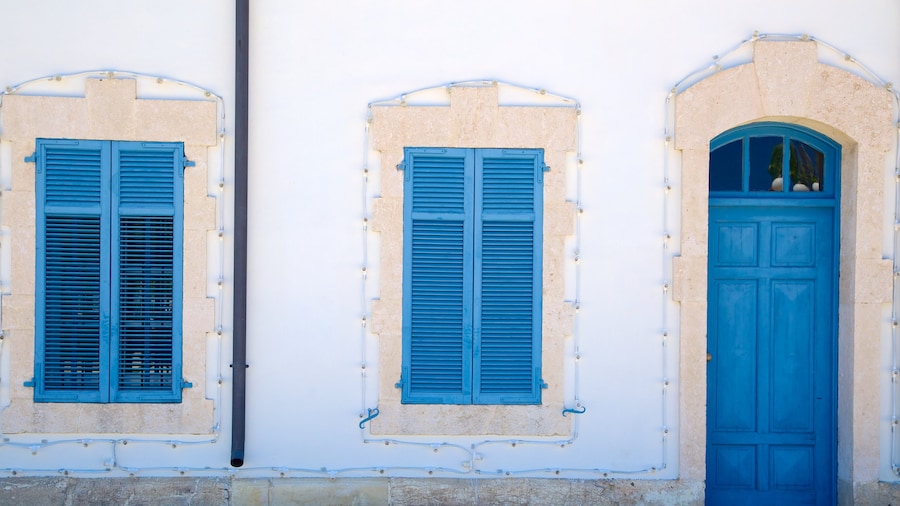Explore the fascinating remnants of the city’s former defensive fortress in this museum and castle that overlook the Mediterranean Sea.
Visit Larnaca Fort, an impressive landmark with a museum consisting of several rooms and intriguing relics from the past. The Byzantine structure’s exact history remains a mystery, but it was built during the Middle Ages to protect the town’s main harbour. It is likely the castle was constructed under the rule of James I in the 14th century, although Ottoman rulers added several segments later.
Admire the timeless fort from the spacious plaza at the southern end of Finikoudes Beach. Capture photos of the stone building with its red tiled roof. It is reasonably well preserved, although some walls have fallen over the centuries. Sit on a bench and watch the waves of the Mediterranean Sea from this scenic setting, surrounded by palm trees and floral displays.
Enter the castle and walk through the various rooms of the museum. Notice how the building has changed over the years. The courtyard hosts many cultural events in the summer. Sit at the 200-seater theatre and watch a play or musical performance.
See interesting relics, such as Muslim and Christian headstones and an execution chamber. Peruse the collection of photos of the structure from decades ago.Learn about the fort’s rich history from the docents in the museum. The British used it as a prison toward the end of the 19th century and the Germans occupied it during World War I. After the war, the British reinstated the prison with gallows where executions took place until 1948.
The museum is open year-round from morning until late afternoon, with later closing times in the summer.
Larnaca Fort is at the southern point of Finikoudes Beach on the city’s eastern shores. Take a bus to one of the stops near Europe Square in the historic centre of Larnaca. Make additional stops at the Larnaca Market and the Church of Lazarus near the fort.
